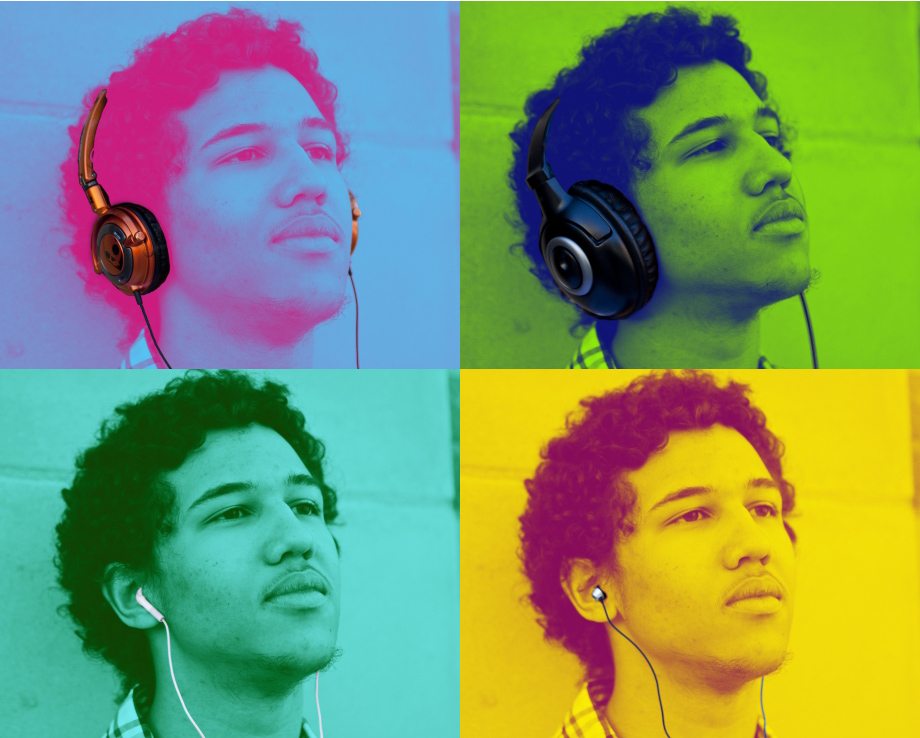Over the past few decades, headphones have become a technological staple among college students. Whether they are for musical accompaniment during the 20-minute strut to class, or used as a protective force field shielding students from Bruin Walk fliering, almost everyone has a pair.
But in recent years, a mysterious fashion blast from the past has invaded the music-listening world.
In a nod to the 1970s, headphone companies are designing elaborately retro over-ear products doused in bright primary colors. And the ear pods are gigantic, far exceeding the height and width of the average ear. It almost seems as if the bulkier the pair, the better, which sparks the question: does size really matter?
Amanda Watarz, a fourth-year Design | Media Arts student, works for Audio Visual Services on campus and is currently enrolled in a sound engineering class. Over the course of winter quarter, she learned about audio and sound quality in terms of artificial sound creation for visual arts.
“Some people think it looks like you’re more seriously into music if there is a really big ear covering, but that’s not necessarily true,” Watarz said.
According to Watarz, headphone size is not what changes sound quality. She owns a pair of Sony professional MDR series headphones that she purchased for her class and they discretely cover her entire ear without drastically protruding outward. Although they are smaller than some of the more popular and stylized headphones, they are able to pick up a larger range of frequencies that often become distorted with lesser-quality headphones or computer speakers.
When rewinding a bit to take a closer look at the history of headphones, there is a straightforward size progression from big to small, eventually leading to the ear buds of today.
One of the very first pairs of headphones, developed in the beginning of the 20th century, was called the moving-iron headphone. Its bronze ear pods clamped tightly around the ear with no padding, and iron rods jutted out, making the user look like the star of a sci-fi fantasy film.
But headphones, like most other electronic accessories, have constantly advanced with the discovery of new technologies.
One of the biggest headphone trend changes was during the transition from the ’70s to the ’80s. This marked the invention of circumaural headphones, which had massive ear pods that cupped around the entire ear. This encompassing quality created a sealing around the ear, blocking out any external noise; this effect is also referred to as “noise canceling,” or “sound proofing.”
Many current brands, such as Sony, Bose and Sennheiser, use an improved version of the circumaural design today. The headphones come in various sizes and weights, proving that superior sound quality does not necessarily require the headphone design to be larger, bulkier or more colorful than a human head.
Yet people are still turning to the reassumed vintage and retro-looking headphones, as they have slowly become a fashion statement.
“Style is important to me,” said Ayed Fakhoury, a third-year psychobiology student who was standing with a group of friends in the Court of Sciences, wearing around his neck a chunky pair of black over-ear headphones with neon-green trimming. “But in reality, really big headphones are better for DJs (because they) need them for the extreme noise cancellation. But they are impractical for everyday use. For us, medium-sized headphones are just as good and more convenient.”
Fakhoury owns a separate pair of ear buds for the gym because he cannot run with his larger pair. He said that when he exercises he simply wants a background beat, not good quality sound, which is why a modest pair of Skullcandy ear buds fit the bill.
Andrew Longaker, a fourth-year music performance student with an emphasis on jazz performance, also acknowledged the fact that in terms of quality, ear buds do not compare to an over-the-year headphone.
“If you really appreciate good music, you can’t buy ear buds,” said Longaker. “When you look for good quality headphones, finding professional brands is key; size doesn’t really matter.”
When it comes to personal preference, Longaker buys brand-name products. He owns a pair of Bose over-ear headphones and a backup pair of Sonys. Both brands are notoriously high-end and cater to audiophiles. Longaker’s headphones are black, subtle and sleek and the ear pods are just large enough to cover the circumference of his ear.
There seem to be advantages to owning over-ear headphones, a classic design that has been around since the device’s birth. However, in light of today’s headphone trends, while bigger might be better, colossal is not.
